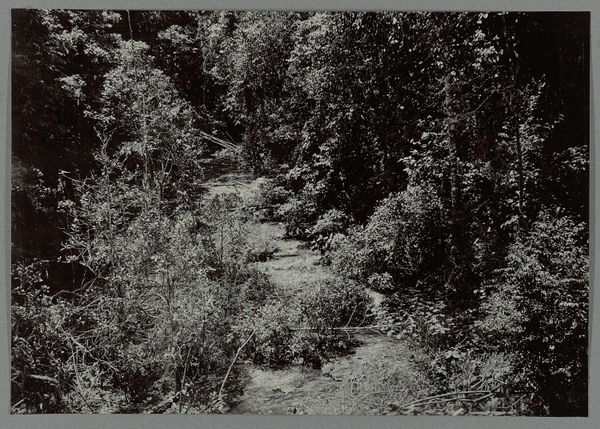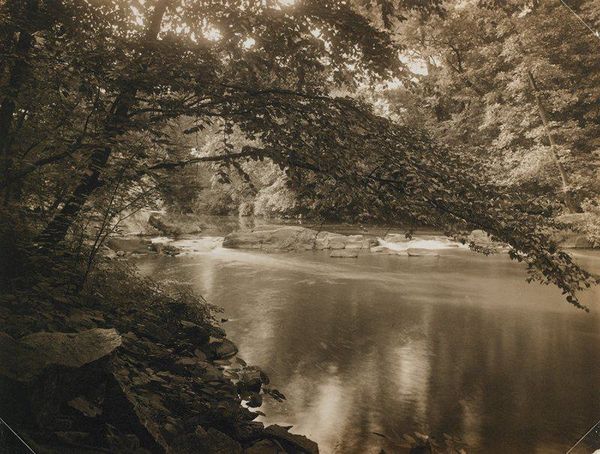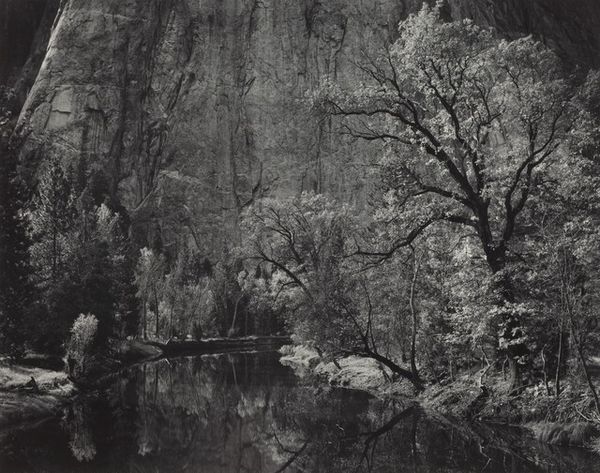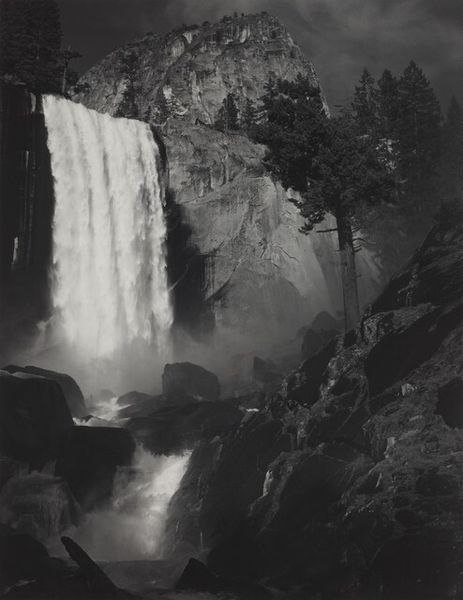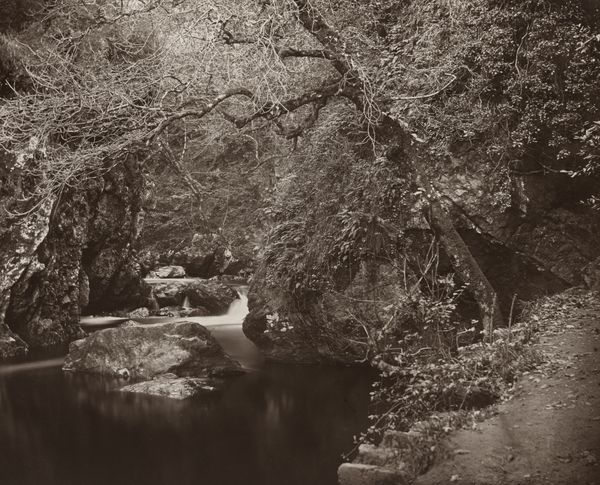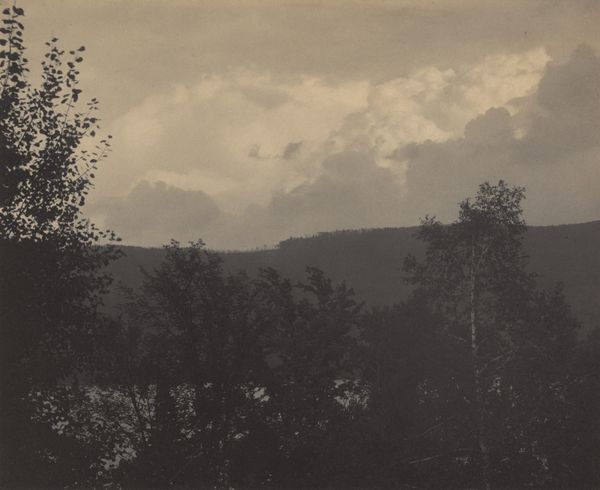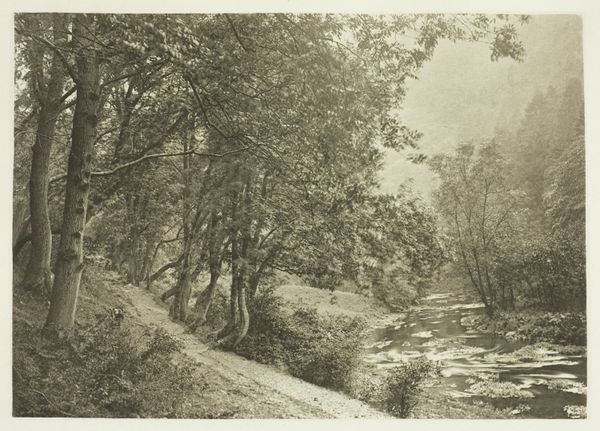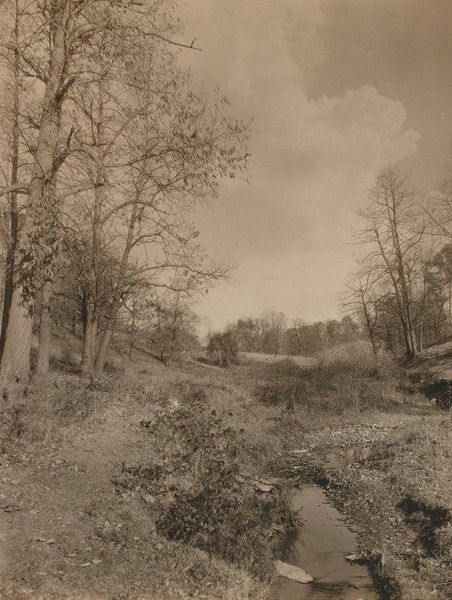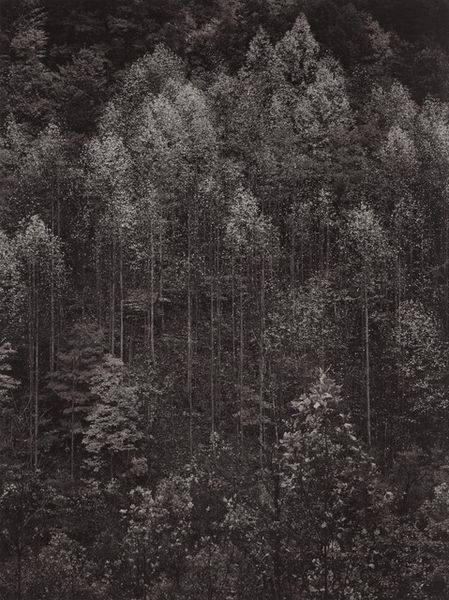
Tenaya Creek, Dogwood, Rain, Yosemite National Park, California c. 1948 - 1980
0:00
0:00
plein-air, photography, gelatin-silver-print
#
natural shape and form
#
snowscape
#
countryside
#
plein-air
#
landscape
#
eerie mood
#
photography
#
gelatin-silver-print
#
gloomy
#
fog
#
murky
#
natural form
#
realism
#
mist
#
shadow overcast
Dimensions: overall: 48.7 x 38.4 cm (19 3/16 x 15 1/8 in.)
Copyright: National Gallery of Art: CC0 1.0
Editor: This gelatin-silver print, titled "Tenaya Creek, Dogwood, Rain, Yosemite National Park, California," was captured by Ansel Adams sometime between 1948 and 1980. It’s breathtaking—the textures, the contrasts… almost dreamlike. What socio-political forces were at play that influenced its reception and what did the public think about the work and why? Curator: The sublime quality you perceive speaks to a specific cultural moment. Consider that after World War II, there was a surge of interest in conservation and preservation. Adams’s images, particularly his photographs of the American West, played a crucial role in shaping this movement and the growing National Park system. Did viewers at the time see it differently than we do now, perhaps? Editor: Definitely, yes. I imagine back then they really saw the image of an untouched and pristine American landscape to believe in and idealize after the destruction of the War. Was his photography always so focused on national parks, or did that evolve? Curator: Adams became deeply involved with the Sierra Club and used his work as a tool for advocacy. So, while his aesthetic was his own, his subjects became intrinsically linked to conservationist politics and national identity. How does that lens of advocacy affect your view of the piece now? Editor: I can better understand it now: his deliberate compositions become even more powerful— not just aesthetic choices, but arguments for preservation, to encourage the public that we should focus on protection and conservation efforts. This changes the way I read the artwork quite a bit, it feels very meaningful and deeply connected to history. Curator: Precisely! Recognizing that intersection enriches the experience of the art itself. Editor: This was fascinating. I'm leaving this conversation with a totally new point of view about the connection of art to broader historical events and with conservationist politics. Thanks so much! Curator: My pleasure. Always consider the context in which art is created and consumed, to gain more insights of that specific artwork and what its creator's focus and perspective are, at any given moment.
Comments
No comments
Be the first to comment and join the conversation on the ultimate creative platform.


